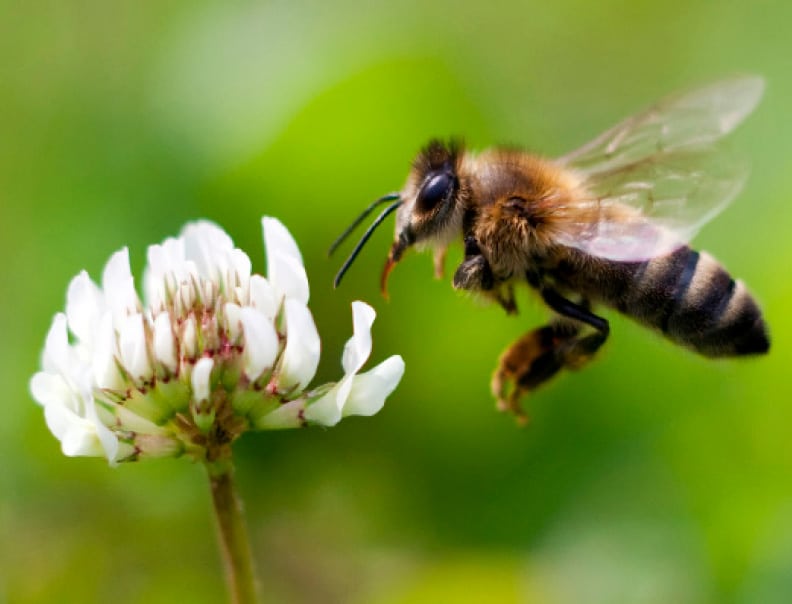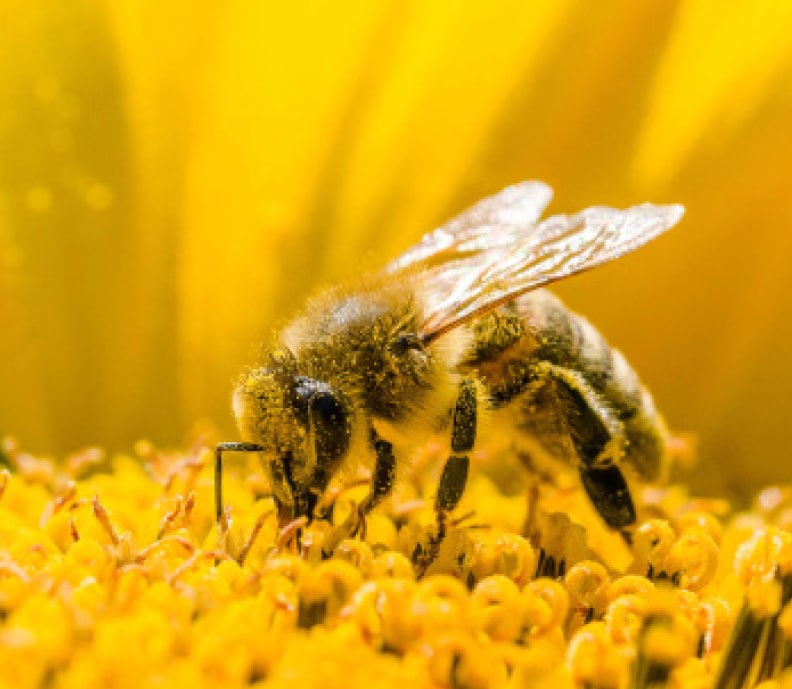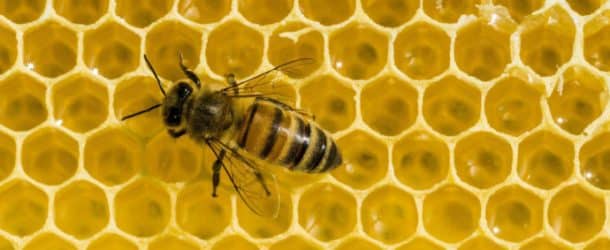By Madelaine B. Landry
“Most people don’t have any idea about all the complicated life going on inside a hive. Bees have a secret life we don’t know anything about.” — Sue Monk Kidd
When beekeeping as a possible hobby first came to me, we had just purchased land. Like many folks, I had a stereotypical image of an old man, donned in helmet and protective suit, tending carefully to an obedient hive of bees. Once I found him, I would simply request that he place a few hives on our place in exchange for a few jars of honey. A few things occurred that changed my mind.

In my role at a local college, one of my tasks was to find support for programs that would enhance communication and learning among our students, faculty and staff. We initiated a community garden—a way for the college to communicate outwardly, with the local community.
A video came to my attention. “Queen of the Sun” drew a diverse audience as we showed it around venues in Acadiana, seeking support for our project.
My search for the “old man” sent me to DeRidder for a beekeeping association meeting. Men, women, old, young, black, white, Hispanic, Asian…everyone, it appeared, was either “keeping” bees or interested in doing so.
It didn’t take long to learn that “beekeeping” was a misnomer—bees will not be kept, but they will keep their hive tenders interested, intrigued and indebted.
Finally, I read this tidbit in my book: “But according to Seeley, in the days before swarming the workers start to treat their poor queen aggressively. They shake her, push her, and bite her—actions which force her to keep moving across the surface of the comb. All this walking, combined with the reduced availability of food, causes her to lose up to 25 percent of her body weight by the time the colony is ready to swarm.”
This is how they treat the queen? Make no mistake. The workers Seeley speaks of are her own daughters! Hmmm…how could I impart this wisdom to my daughters?
And so, I dove in, ordering two hives of bees to start my own undertaking. Smugly, I dreamed of becoming one among the legions of keepers who create islands of safety for pollinators, sanctuaries for the sacred honeybees. Along the way, I discovered more about the social organization of these incredible (mostly) ladies. I was stung, literally and figuratively, by the collective wisdom one finds in a hive.
The males, drones, make up only about one-percent of a hive, and they possess an unusual genealogical tree. Technically, they have no father, making the queen bee the world’s oldest single mother. Drones are born to mate with queens from other hives. Other than that, we originally assumed they took up space in the hive, eating honey, watching the equivalent of bee TV and thinking about sex. When honey is scarce, their sisters resort to fratricide; they even have honeybee “funeral bees,” tasked with getting rid of the bodies.
Over a century ago, humans thought we could artificially inseminate queens, breeding for the most desired honey-producing traits. Interestingly, however, the percentage of drones remained steady in the hive, despite their perceived uselessness. Why? Drones were eating the life-giving food needed for the worker bees.
Scientists thought their elimination was a good idea until…bee-followers discovered drones could enter hives other than their own, something their sisters cannot do without being chased away or attacked.
In the “nursery,” drones emit a vibratory song that imprints the unborn larvae. One of the theories behind CCD, Colony Collapse Disorder, is that by eliminating the drones, we disregarded nature’s way of teaching bees to fly miles away from their hives, while possessing the uncanny ability to always return home.

Scout bees are a hive’s real estate agents, searching for promising cavities. The new home must be roomy, but not too big. It must be secure from predators. About a hundred scouts fly around, inspecting potential sites, before returning to the swarm to perform a waggle dance.
According to Seeley, “The direction of the waggle dance shows the direction of the new location relative to the angle of the sun, and the duration of each circuit of the dance indicates distance…” Google Maps has nothing on these gals!
“Bees are thoroughly honest advertisers. The better she judges the site, the longer she dances, and the more effective she is in recruiting other scouts to make their own forays to the spot,” notes Seeley.
Thus, despite all the competing information, the swarm decides. The most influential scout-sister induces them to fly to a new location. Communication within a super-organism. Collective group wisdom. What can we learn?
Shared interest and mutual respect? Examination of multiple solutions? Information sharing, interdependence and lessening the influence of peer pressure? Lessening the allure of one charismatic leader? As a Cornell professor, Seeley has used these methods in organizational meetings to build consensus and produce decisions.
For me, as a communication instructor, this was fascinating and valuable information. As a land owner, the obvious benefits to our citrus, fig and vegetable growing made me appreciate all pollinators.
Environmentally, we know so much less than we assume. And while I relied on many beekeeping “experts” to help along the way, in a decade of keeping bees, I learned to love the solitary characteristics of my new hobby. You want to practice social isolation? Ask friends to put on a suit and helmet to assist you in lifting the 100-pound supers. In ten years, two people accepted…once! But seriously, the ladies communicate with the honey harvester constantly, but it takes careful listening. Eventually, this became more honor than hobby.
I gave away and sold most of my beekeeping equipment. My two hives swarmed last summer, and while it was bittersweet to give this up, the timing felt right. I couldn’t bring myself to part with my jacket and helmet, however; I’ll keep those as reminders of lessons learned.
Beekeeping wannabes should contact their local beekeeping associations. Members assist and teach each other; again, collective wisdom and information sharing from and about the hives. Visit https://www.labeekeepers.org/ for additional reports on swarms, hive removals and local clubs. Buy local honey at farmer’s market—yes, it is an allergy aid. Teach the next generation about the value of our pollinators and plant pollinator-friendly gardens.
As for me, I’ve yet to convince my daughters that they should shake me and keep me away from sweets, but I gotta admit, I have learned to do a mean waggle dance.















Comments are closed.